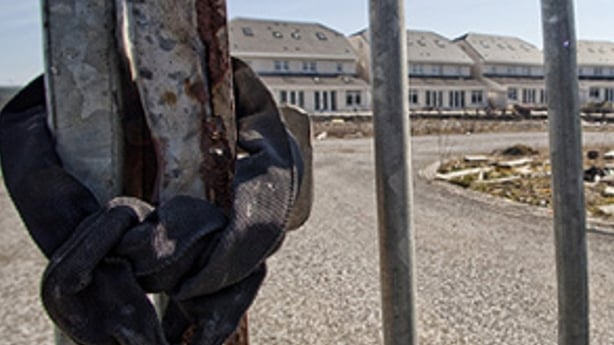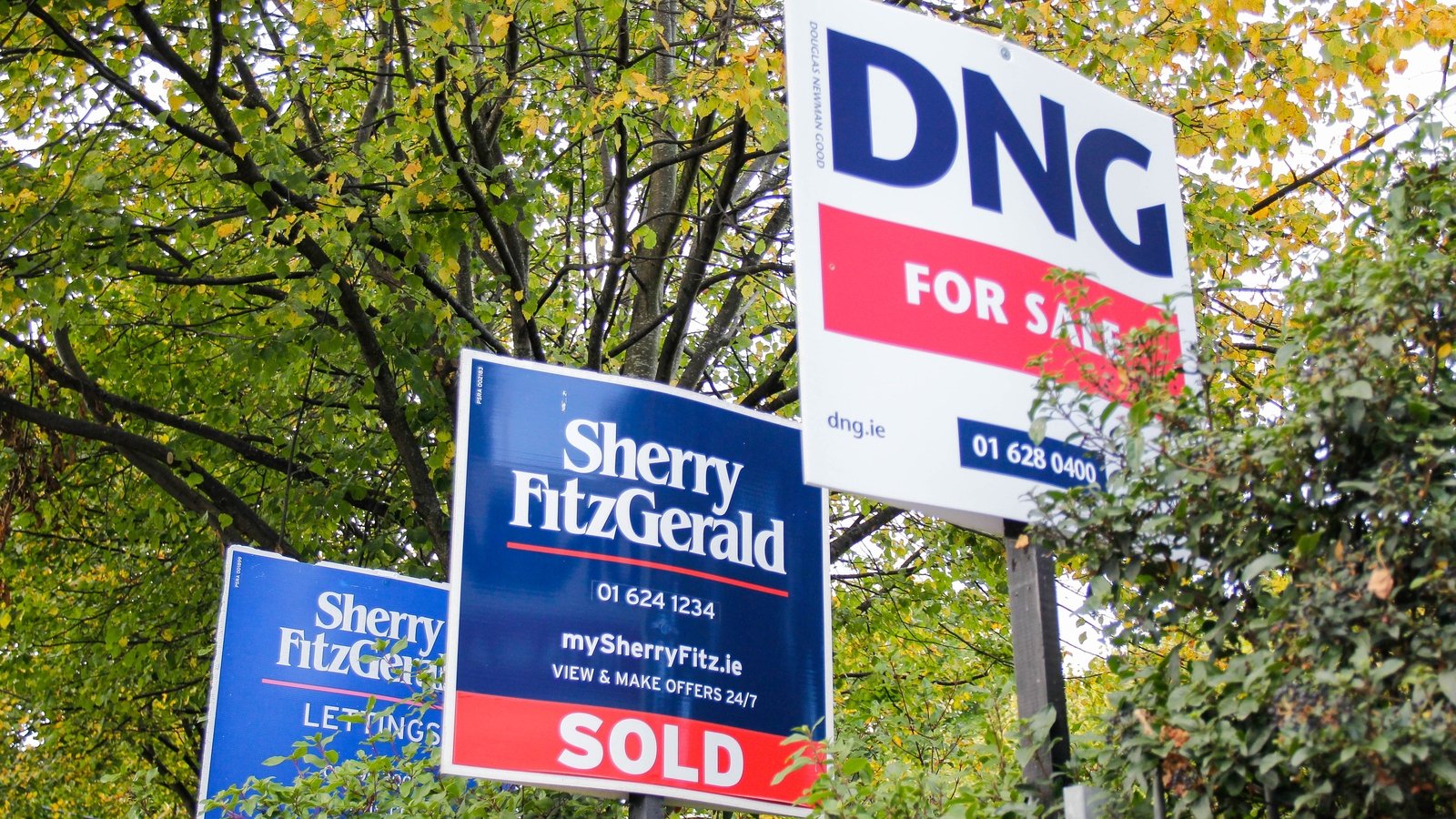As the latest property price figures show the cost of buying a home is up 10% over the past 12 months, RTÉ’s Economics and Public Affairs Correspondent David Murphy looks at the underlying reasons for the increase, and what is going to happen in future.
What is driving prices up?
The economy is performing remarkably well, unemployment is low, and the population is growing quickly.These are some of the ingredients driving demand for housing.
But the country is not building enough homes to keep up with potential buyers.
That is driving prices higher, and it has been for some years.
As the Central Statistics Office published its latest figures for house prices, they confirm that the cost of buying a home has risen yet again.
How does the latest information compare historically?
Prices are now 13.4% above the peak they reached in 2007 during the boom.
The bubble burst in late 2008 and the cost of property steadily fell until 2013 when they reached their nadir, and prices then began to recover.
Now they are 153% up from the trough they reached in early 2013.
What is going to happen now?
A key factor dictating the activity in a property market is interest rates.
Over the past two years the European Central Bank (ECB) increased the cost of borrowing to bring the cost-of-living crisis under control.
Its target is to keep inflation close to 2%.
The latest figures for the Eurozone suggest that prices are rising at a rate of 1.7% annually, so the bank has achieved that aim.
It means the ECB is likely to continue to cut rates with the next reduction likely to come tomorrow.
That will bring down borrowing costs for home buyers, and that is likely to add demand to the property market.
How many homes are being built?
Last year, there were almost 33,000 homes completed in Ireland.
In the first half of this year 12,000 were completed.
So, economists at the Central Bank and ESRI are doubtful that there will be more homes built this year than in 2023.
The Government is more optimistic and has suggested there could be nearer to 40,000.
But that would require a big increase in housing output in the second half of this year.
What about the housing shortfall?
There is a big cohort of people who are struggling to get on the property ladder.
Many are living in shared rented accommodation or living with parents.
It estimated this so-called housing deficit could be up to 256,000, according to experts on the Housing Commission.
To catch up, the Central Bank has suggested 52,000 homes need to be built annually.
But that would still take 25 years to deal with the deficit in housing, and meet ongoing demand driven by the rising population.
If the issue was to be resolved in a decade it would require 70,000 homes per annum – which is about twice the amount of houses built last year.
Is it not just about new homes?
The number of second-hand houses and apartments on the market is much lower than it was in the past too.
Estate agents Sherry Fitzgerald says there were 12,700 homes on the market in July of this year, 7% down on the same time in 2023.
Will there be a crash?
One of the big concerns is whether there could be another property crash.
The last bubble was partly driven by a credit boom.

When property prices fell at the same time as the economy shrank the banking system was also wiped out.
But the Central Bank has brought in strict rules for borrowers to prevent them becoming over exposed.
There are also significant restrictions on how much retail banks can lend for property development.
That should prevent a collapse in the banking system in the event of a downturn and potentially limit the risk of negative equity borrowers.
But none of that would stop a fall in property values if the economy was to shrink, and there was a return to emigration.
However, right now there seems to be no sign of the property juggernaut slowing down.

